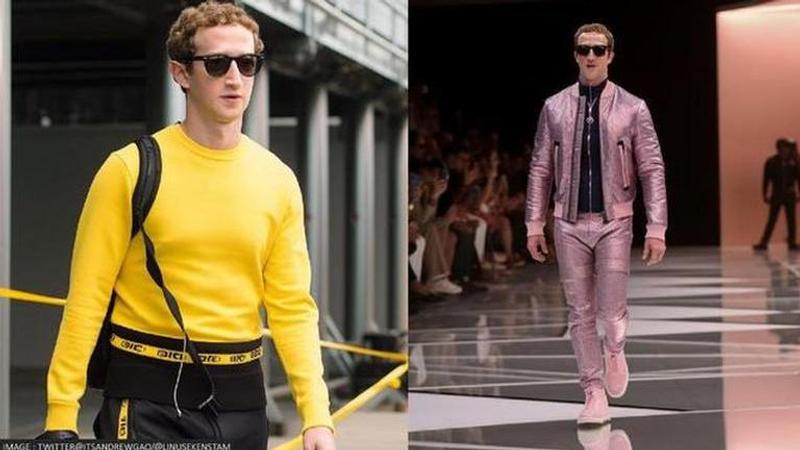Published 16:17 IST, April 2nd 2023
Meta CEO Zuckerberg walks down a ramp flaunting various outfits; Wait, WHAT?
AI creates images of Facebook CEO Mark Zuckerberg flaunting a trendy outfit walking down the ramp while displaying flawless expression that models sport.

It is not common to see Mark Zuckerberg, the CEO of Meta, dressed in a fancy Louis Vuitton outfit and walking on the runway; it is actually quite unimaginable because he prefers a casual dress code which is usually an ensemble of a grey t-shirt, denim and sneakers. However, with the help of artificial technology, such as AI-generated images, it has become increasingly difficult to differentiate between real and fake pictures.
This has led to confusion among internet users who are unsure if the images are genuine or not. In the pictures, Zuckerberg can be observed maintaining a perfect expression similar to that of a professional model during a runway show.
Images of Zuckerberg sporting a bright yellow outfit and a blingy pink Louis Vuitton outfit while walking the runway have gone viral on the internet. However, it is important to note that Zuckerberg has not decided to pursue a modelling career.
Mark Zuckerberg doing rounds on the runway, pure fashionista.
— Linus (●ᴗ●) (@LinusEkenstam) March 29, 2023
💬Prompt in alt https://t.co/GQB0nXRzHs pic.twitter.com/xYE3zkaGAm
The pictures were generated using AI tools such as Midjourney and Dall-E, which have become so advanced that it has become difficult to differentiate between real and fake photos. The AI-generated images of Zuckerberg have perfectly captured the facial expressions that models typically exhibit during a fashion show.
follow for more AI imagery pic.twitter.com/nDyqEijMOF
— Andrew Kean Gao (@itsandrewgao) March 29, 2023
These pictures were initially shared by an AI creator named Linus on Twitter, and another user named Czarek Michalski followed suit by creating similar images of Elon Musk walking the runway in blingy outfits.
Deep fakes & the diaspora around them
AI has revolutionised the field of image creation and manipulation, and while this technology has immense potential for good, it also has the potential to be used maliciously. The ability to generate images that look convincingly real using AI algorithms has raised concerns about the proliferation of fake images and deep fakes.
Deep Fakes are manipulated images or videos that use AI algorithms to create false but realistic content. They can be used to spread false information or damage the reputation of individuals or organisations. For instance, deep fakes could be used to make it appear as if someone said or did something that they did not actually do, potentially leading to harm or social unrest.
AI-generated images also have the potential to violate privacy, as they may use personal data or images without consent. For instance, some AI-powered services allow users to generate images of people who do not exist, using a database of facial features and other attributes. These generated images could be used to create fake social media profiles or to impersonate individuals online.
To address these concerns, researchers are working on developing technologies to detect fake images and deep fakes. These technologies use machine learning algorithms to analyse images and identify signs of manipulation. In addition, policymakers and tech companies are working on establishing guidelines and regulations to prevent the malicious use of AI-generated images.
Overall, AI-generated images have the potential to be both a boon and a bane for society. While they offer many exciting possibilities for creative expression and communication, it is important to be aware of their potential risks and take necessary precautions to prevent their misuse.
Updated 16:17 IST, April 2nd 2023



